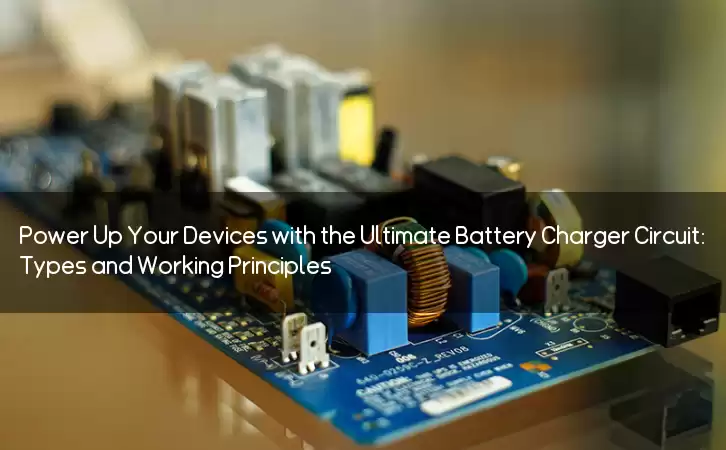Information Center
Power Up Your Devices with the Ultimate Battery Charger Circuit: Types and Working Principles
Published:2023-07-29 10:33:49 Author:Green WCND Views:62Battery Charger Circuit: An Overview

A battery charger circuit is an electronic device that charges a rechargeable battery or an accumulator to its full capacity. It is used to power up various electronic gadgets that run on batteries, such as smartphones, laptops, tablets, cameras, etc. The battery charger circuit can be either a stand-alone circuit or can be integrated as a part of other circuits. There are various types of battery charger circuits available in the market, ranging from simple linear chargers to complex switching mode chargers. In this article, we will discuss the basics of a battery charger circuit, its types, and their working principles.

Basics of a Battery Charger Circuit

A battery charger circuit is designed to charge a battery by applying a constant current or a constant voltage. The charging process can be divided into three stages - the bulk charge, absorption charge, and float charge. In the bulk charge stage, the charger applies a constant current to charge the battery until it reaches its maximum voltage. In the absorption charge stage, the charger switches to the constant voltage mode and maintains the voltage at the maximum level for a specific time to bring the battery to its full capacity. Finally, in the float charge stage, the charger maintains a lower voltage to keep the battery fully charged without overcharging it.
Types of Battery Charger Circuits
There are mainly two types of battery charger circuits - linear chargers and switching mode chargers. Let’s discuss them in detail.
Linear Chargers: A linear charger, also known as a series regulator charger, is a simple and low-cost charger circuit that provides a constant current to the battery. The circuit includes a power supply, an NPN transistor, a diode, and a resistor. The NPN transistor acts as a current regulator and regulates the charging current. However, the linear charger has some disadvantages, such as low efficiency, high heat dissipation, and slow charging time.
Switching Mode Chargers: A switching mode charger, also known as a pulse charger, is a more efficient and faster charger circuit than the linear charger. The circuit uses a high-frequency oscillator to charge the battery by switching between the constant current and constant voltage modes. The switching mode charger includes a transformer, a rectifier, a capacitor, and a controller IC. The controller IC controls the charging current and voltage by adjusting the switching frequency.
Working Principle of a Battery Charger Circuit
The working principle of a battery charger circuit depends on its type. In a linear charger, the battery charges in the bulk charge stage when the transistor is in the conducting state, and the voltage across the battery increases. In the absorption charge stage, the diode conducts, and the voltage across the battery is maintained at a constant level. However, in a switching mode charger, the battery charges by switching between the constant current and constant voltage modes. The transformer steps up or steps down the voltage depending on the charging stage.
In conclusion, the battery charger circuit is an essential electronic device that charges the battery and powers up various electronic gadgets we use every day. It is important to choose the right type of battery charger circuit based on your electronic device’s battery type and charging requirements. Understanding the basics of the battery charger circuit and its working principle can help you make an informed decision when purchasing a battery charger circuit.
Power Adapter Design and Customization Guide for Portable Electric KettlesI. Common Design Types for Portable Electric Kettle Power AdaptersPortable electric ke···
I. Common Design Types of Power Adapters External Independent Type (Most Common) Design: A standalone adapter (e.g., "black brick") connected to the p···
Handheld Vacuum Cleaner Power Adapter Selection GuideIntroductionHandheld vacuum cleaners have become a mainstream tool for household cleaning due to their port···
Drill Power Adapter Selection Guide.drill-container { font-family: Arial, sans-serif; line-height: 1.6; max-width: 800px; margin: 0 auto; padding: 20px; } .dril···





